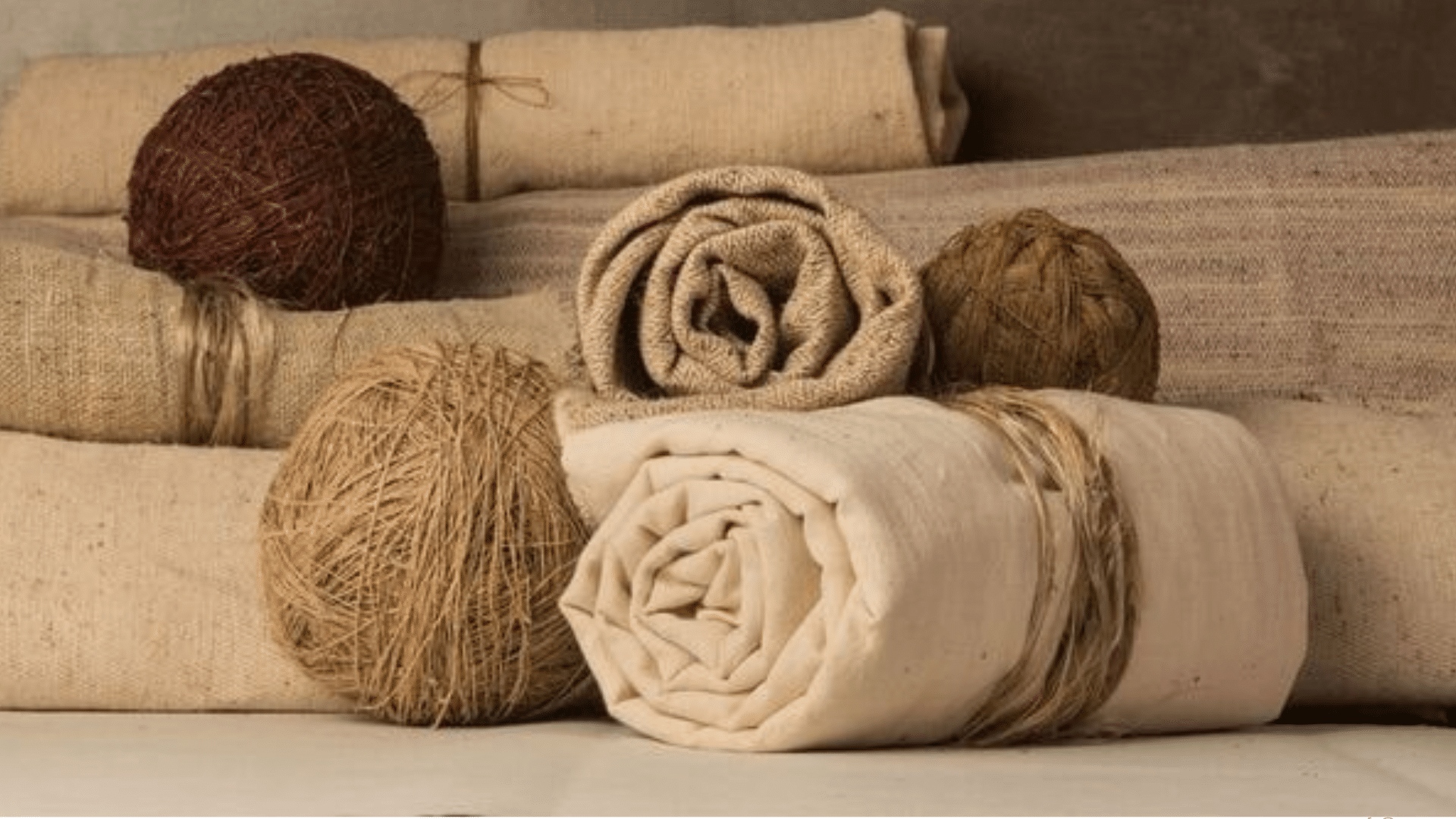Fast fashion’s grip is loosening, and people are finding what their grandparents always knew: natural fibers just feel better.
Cotton, linen, wool, and silk aren’t just trendy buzzwords anymore.
They’re becoming the go-to choice for folks who want clothes that breathe, last longer, and don’t harm the planet.
But what’s driving this shift back to basics? And why are more people choosing natural fiber clothing over synthetic alternatives?
Let’s get into this growing movement that’s reshaping how we think about what we wear.
What Exactly are Natural Fibers?
Natural fibers are materials that come directly from plants or animals; no chemical processing is required to create the basic fiber structure.
Think of cotton picked from cotton plants, wool sheared from sheep, or flax harvested to make linen.
These fibers have existed in nature for millennia and have been utilized by humans for clothing, shelter, and tools.
The key difference is that Synthetic fibers, such as polyester, are manufactured from petroleum-based chemicals, while semi-synthetic materials, like rayon, start with natural cellulose but require intensive chemical processing to change it into a usable fiber.
Natural fibers, however, maintain their original structure from source to thread.
Why the World is Turning to Natural Fibers?
The shift toward natural fiber clothing isn’t just a trend; it’s a response to real problems.
Fast fashion has flooded our closets with inexpensive, synthetic clothing that quickly deteriorates and contributes to environmental damage.
People are getting tired of replacing garments every few months and dealing with fabrics that don’t breathe.
Health concerns are also driving change. Synthetic materials can trap bacteria and cause skin irritation, while natural fibers like cotton and wool naturally resist odors and feel gentler against sensitive skin.
Additionally, there’s growing awareness about microplastics; tiny synthetic fibers that shed during washing and end up in our water supply.
Sustainability plays a huge role. Natural fibers biodegrade completely, unlike polyester, which lingers in landfills for decades.
Different Types of Popular Natural Fibers
Let’s get into the natural fibers that are making waves in today’s fashion world. Each one brings something unique to the table.
1. Cotton
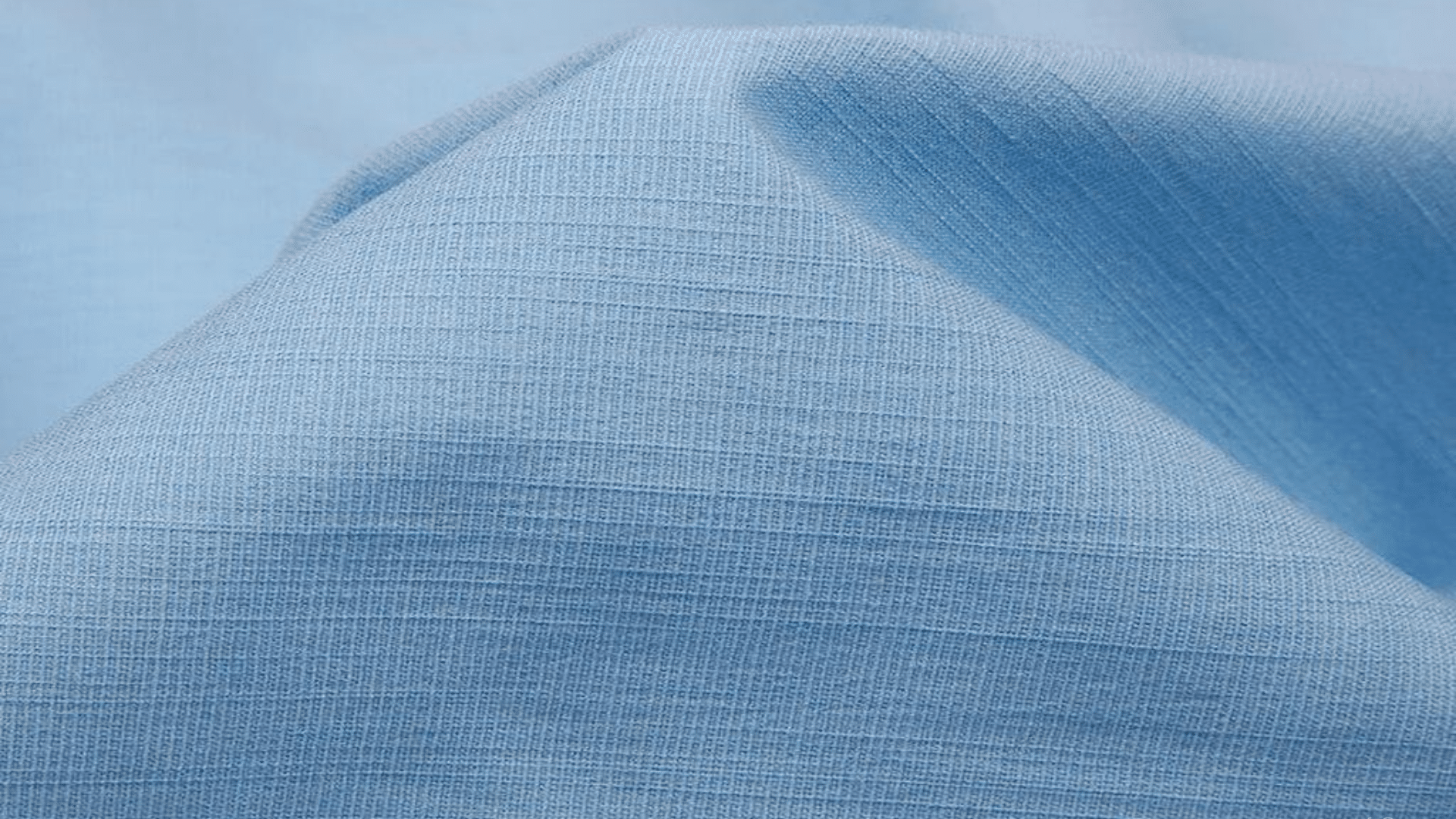
Cotton fabric is one of the most popular and widely used natural fibers in the textile industry. It’s made from the fluffy fibers that surround cotton plant seeds.
Origin: India, Mexico, and Peru
Common uses: T-shirts, jeans, bed sheets, towels, and underwear.
Key characteristics:
- Cotton is incredibly soft, breathable, and absorbent.
- It gets softer with each wash and can handle frequent laundering without losing its shape.
- It’s also hypoallergenic, making it perfect for sensitive skin.
2. Linen
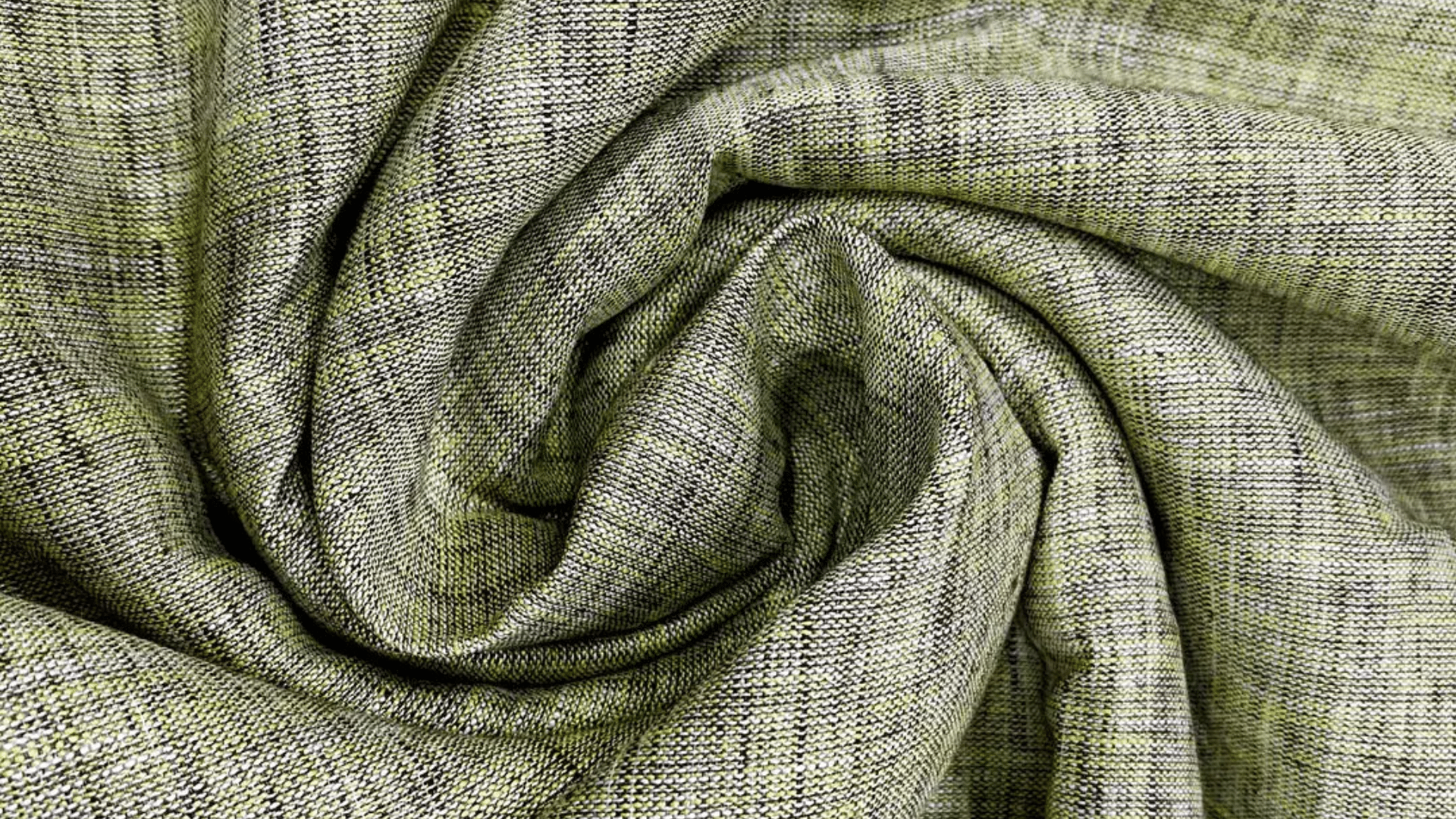
Linen fabric is a natural textile made from the fibers of the flax plant, known for its crisp texture and relaxed appearance.
Origin: Egypt
Typical uses: Summer dresses, pants, blazers, bed linens, curtains, and tablecloths.
Key characteristics:
- Linen is naturally crisp and becomes softer over time.
- It’s incredibly breathable and fast-drying, making it ideal for hot weather.
- It wrinkles easily, but that’s part of its relaxed charm.
3. Hemp

Hemp fabric is a natural textile made from the fibers of the cannabis plant’s stalk. It’s one of the strongest and most durable natural fibers available.
Origin: Central Asia
Typical uses: Jeans, jackets, bags, and rope.
Key characteristics:
- Hemp is firm and durable, often outlasting cotton by years.
- It’s naturally antimicrobial, UV-resistant, and gets softer with each wash.
- Hemp requires minimal water and pesticides to grow.
4. Wool

Wool fabric is a natural textile made from the fleece of sheep and other animals like alpacas and goats. It’s a protein-based fiber known for its exceptional insulating properties.
Origin: Ancient Iran
Common uses: Sweaters, coats, suits, and blankets.
Key characteristics:
- Wool naturally regulates temperature, keeping you warm in cold weather and cool in warm weather.
- It’s naturally water-resistant and also odor-resistant.
- Quality wool can last for decades with proper care.
5. Silk

Silk fabric is a natural textile made from the cocoons of silkworms, primarily the domesticated Bombyx mori species.
Origin: China
Common uses: Evening wear, blouses, scarves, and lingerie.
Key characteristics:
- Silk is naturally lustrous, smooth, and temperature-regulating.
- It’s surprisingly strong for such a delicate-feeling fabric and drapes beautifully.
- Silk also has natural protein properties that can benefit skin and hair.
Lesser-Known Natural Fibers Worth Knowing
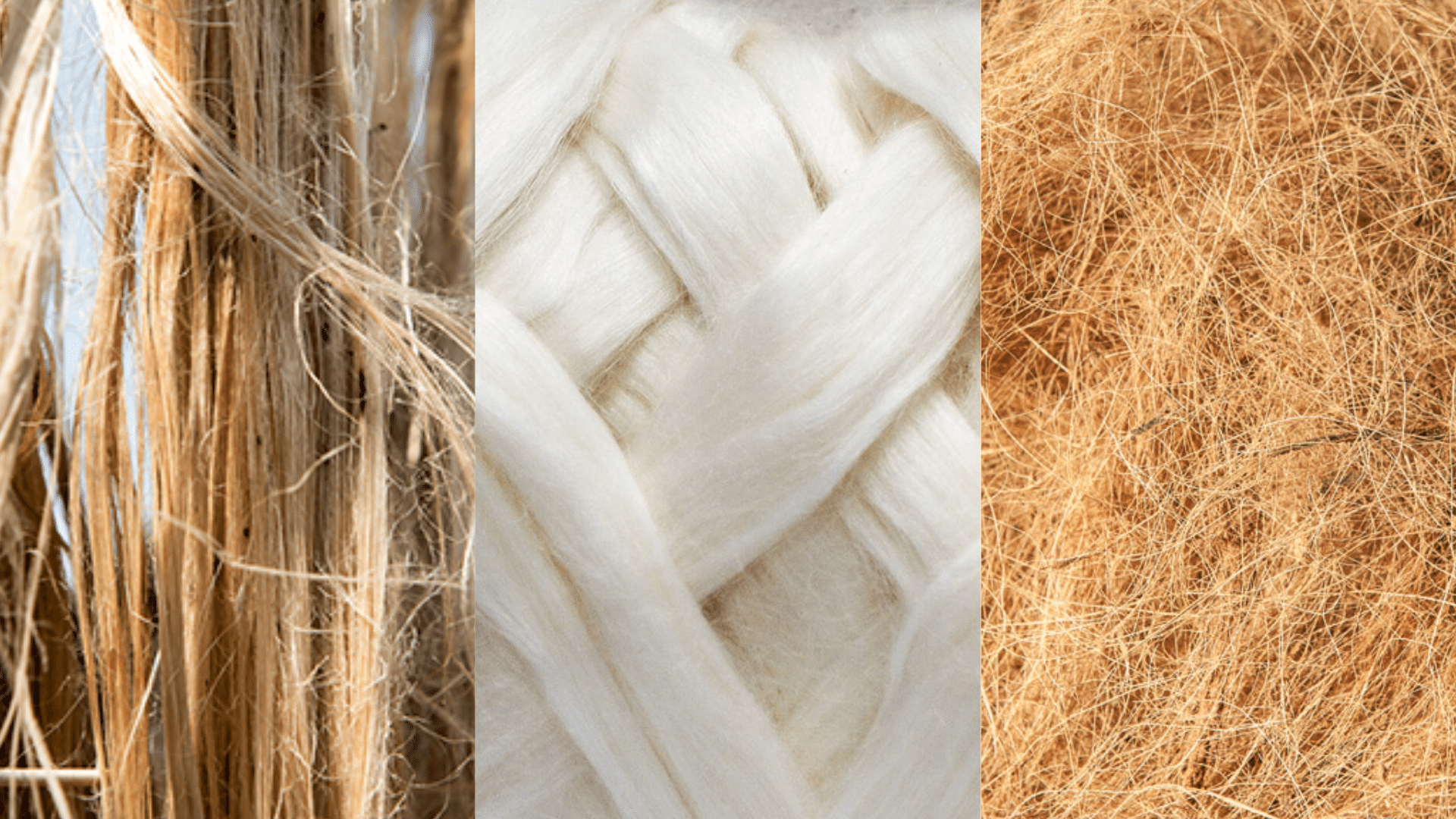
Jute: This plant fiber is incredibly strong and primarily used for bags, rugs, and home décor. It’s biodegradable and requires minimal processing.
Ramie: Often called “China grass,” ramie is stronger than flax and naturally antimicrobial. It’s used in high-end fabrics and blends well with other natural fibers.
Coir: It is made from coconut husks, is naturally water-resistant and durable. While primarily used for ropes and mats, it’s finding new applications sustainably.
Organic and Regenerative Textile Options
Not all natural fiber clothing is created equal.
Natural vs. Organic vs. Regenerative Textiles
Natural textiles are derived from plants or animals, rather than petroleum-based chemicals, but conventional cotton can still involve significant pesticide use.
Organic textiles eliminate synthetic pesticides, herbicides, and fertilizers throughout the growing process. The entire supply chain, from seed to final product, must meet strict organic standards.
Regenerative textiles actively improve the environment while producing fiber. Instead of just “doing less harm,” regenerative agriculture heals damaged ecosystems by building soil carbon and increasing biodiversity.
Certifications to Look For
GOTS (Global Organic Textile Standard) is the gold standard, covering the entire supply chain with organic requirements and fair labor practices.
OEKO-TEX Standard 100 tests for harmful substances, ensuring the final product is safe for human health.
Regenerative Organic Certified (ROC) combines organic standards with regenerative agriculture and strong social fairness requirements.
How Organic Cotton and Peace Silk Boost Sustainability
Organic cotton eliminates 16% of the global pesticides that conventional cotton uses despite occupying only 2.4% of farmland.
It also uses 91% less water through better soil management.
Peace silk allows silkworms to complete their natural lifecycle before harvesting cocoons.
Traditional silk kills pupae, but peace silk lets moths emerge naturally while maintaining the same luxurious feel and natural protein benefits.
Both options demonstrate how natural fiber can extend beyond fundamental sustainability to actively promote environmental and ethical improvements.
Natural Fibers in Home and Lifestyle Textiles
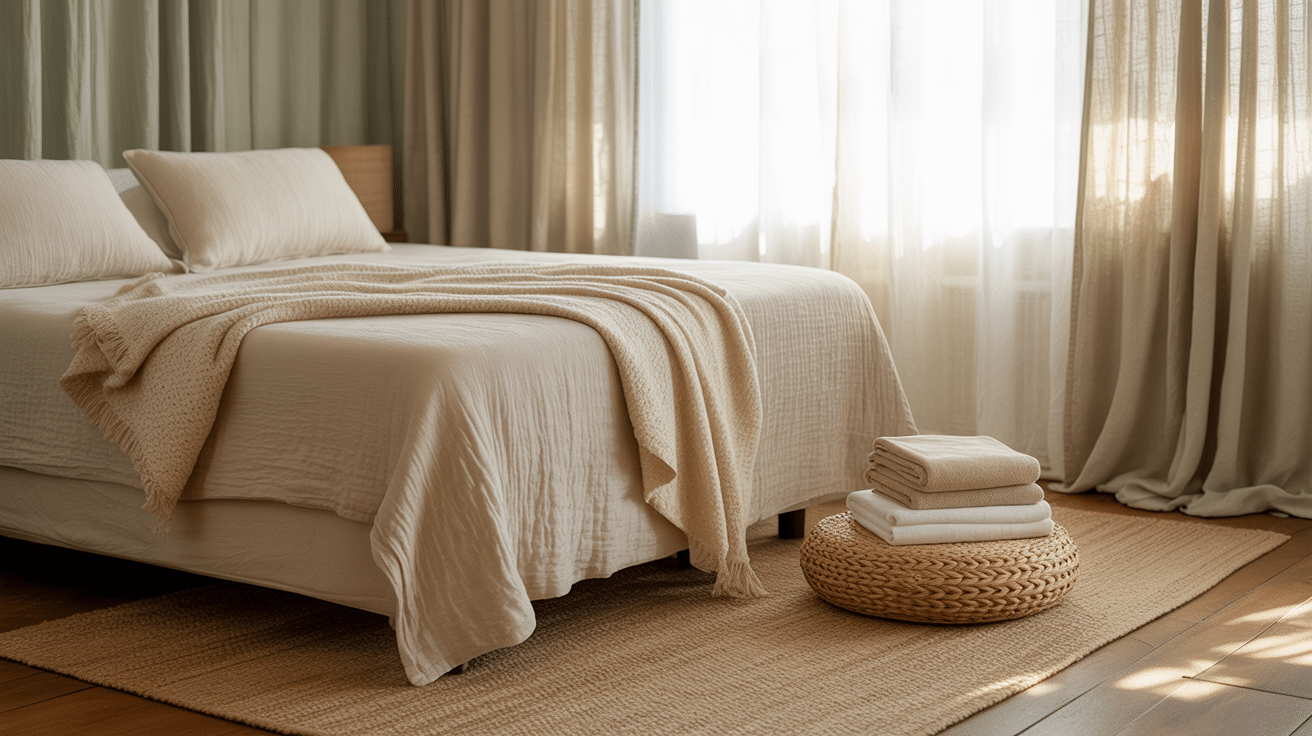
Natural fiber clothing isn’t the only way these materials are changing our lives.
From the bedroom to the nursery, natural fibers are quietly revolutionizing how we create healthier, more sustainable living spaces.
Bedding, Towels, and Upholstery
Organic cotton sheets become softer with every wash, allowing for proper air circulation and preventing the sweaty feeling often associated with polyester.
Linen bedding naturally regulates temperature, while hemp sheets stay fresher for longer due to their antimicrobial properties. Wool comforters wick moisture away while providing perfect temperature control.
Cotton towels become more absorbent over time, whereas bamboo towels naturally resist bacteria and odors.
For upholstery, wool naturally resists stains and lasts decades, while linen and cotton breathe better than synthetic alternatives.
Eco-Conscious Baby Products
Parents are choosing natural fibers to eliminate harsh chemicals during those crucial early months.
Organic cotton crib sheets, wool baby blankets that naturally regulate temperature, and bamboo products with antimicrobial properties create safer environments.
Even organic cotton stuffed animals provide comfort without synthetic materials.
Minimalist and Wellness-Focused Interior Trends
The wellness movement embraces natural fibers as essential for healthy living spaces. Natural fiber rugs improve indoor air quality while synthetic carpets off-gas chemicals.
Linen curtains filter light beautifully while allowing for airflow, creating that effortless aesthetic that has become so popular.
Natural fiber textiles age beautifully rather than looking worn out, aligning perfectly with the minimalist philosophy of buying fewer, better things that last.
Challenges and Considerations in Choosing Natural Fibers
While natural fiber clothing offers impressive benefits, it’s not without its challenges.
- Higher upfront costs: Natural fiber clothing typically costs more than synthetic alternatives due to the higher quality of materials and the use of more ethical production processes.
- Limited availability: Natural fiber clothing is often hard to come by, particularly in smaller towns and budget retail environments.
- Time investment in maintenance: Air-drying, specific detergents, and occasional professional cleaning take more effort than synthetic care.
- Longer lifespan with proper care: Natural fibers can last decades when treated well, often outlasting synthetic garments by years.
Conclusion
The movement toward natural fiber clothing represents more than a fashion trend; it’s a conscious choice for healthier living and a healthier planet.
From breathable cotton basics to luxurious peace silk, these materials offer proven benefits that synthetic alternatives can’t match.
As consumers become more aware of the impact of their choices, natural fibers offer a path forward that honors both personal well-being and environmental responsibility.
The future of sustainable fashion is rooted in the past, and it feels perfect.

